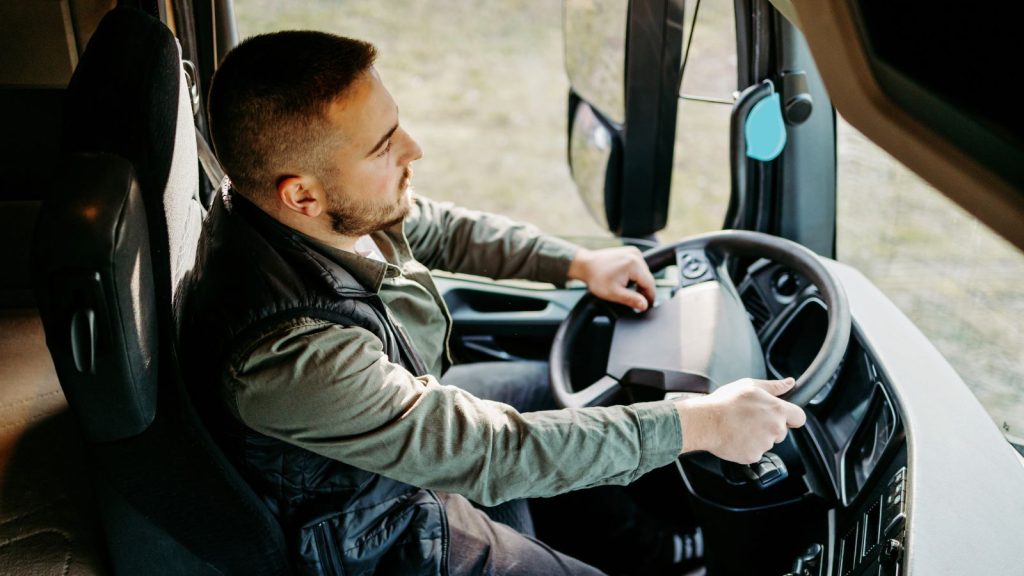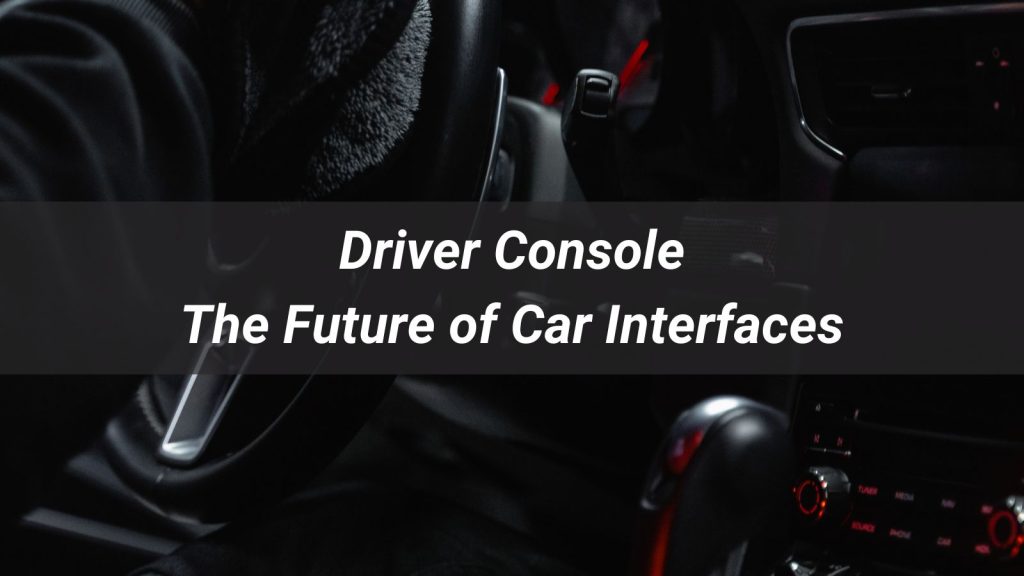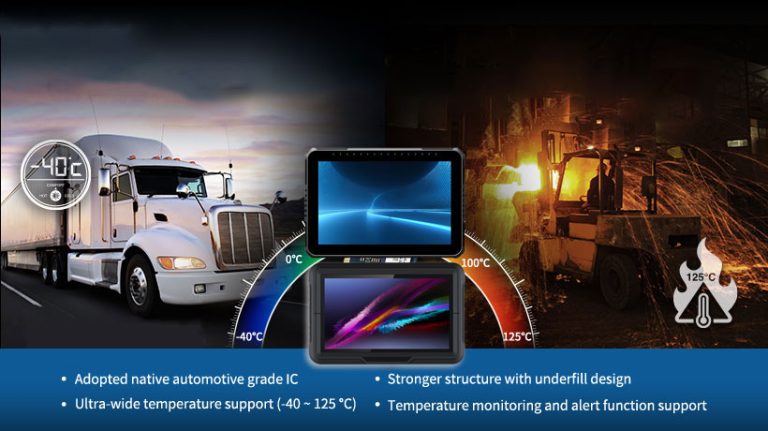The automotive landscape has undergone a remarkable technological revolution, with driver consoles emerging as the nerve center of modern vehicles. These sophisticated interfaces have evolved far beyond their original purpose of displaying basic vehicle metrics, becoming intelligent command centers that seamlessly integrate safety, connectivity, and entertainment functions. Today’s driver consoles represent a perfect fusion of cutting-edge technology and human-centric design, fundamentally transforming how we interact with our vehicles while setting new standards for driving comfort and road safety. This exploration of driver console technology will illuminate its crucial role in shaping the future of mobility, from enhancing driver awareness to paving the way for autonomous vehicle integration.
What is a Driver Console?

A driver console serves as the central interface between the vehicle and its operator, providing critical operational data while enabling control of various systems. Modern versions have evolved into sophisticated digital hubs that integrate navigation, entertainment, and vehicle diagnostics into cohesive user experiences.
Contemporary consoles deliver real-time performance metrics, environmental awareness, and multimedia management through intelligent interfaces. They’ve transitioned from simple gauge clusters to comprehensive control centers that prioritize both functionality and driver engagement.
The progression from analog dials to digital interfaces mirrors automotive technology’s broader advancement. Early dashboards focused solely on mechanical readouts, whereas current systems incorporate adaptive displays and predictive features enabled by onboard computing power.
Key Components of Modern Driver Consoles

Display Systems
High-resolution panels now dominate console designs, offering customizable layouts and crisp visibility under all lighting conditions. These displays can reconfigure information presentation based on driving mode or user preference.
Projection technology beams essential data onto windshields, allowing drivers to maintain focus on the road. Advanced HUD systems incorporate navigation prompts and collision warnings directly within the driver’s sightline.
Cutting-edge AR implementations overlay directional cues and hazard alerts onto real-world views through windshield projections. This technology significantly enhances spatial awareness during complex maneuvers.
Control Interfaces
Capacitive touch panels have become the primary input method in premium vehicles, offering smartphone-like responsiveness. Haptic feedback mechanisms simulate physical button presses to reduce distraction.
Natural language processing enables conversational control of climate, communication, and navigation functions. Modern systems demonstrate remarkable accuracy in noisy environments and with diverse accents.
Tactile controls persist for critical functions like volume adjustment and hazard lights, providing fail-safe operation when touchscreens prove impractical.
Infrared sensors interpret hand movements for contactless control of secondary systems. This emerging technology shows particular promise for rear-seat entertainment management.
Processing Units
Automotive-grade processors combine CPU, GPU, and AI accelerators to power increasingly complex interfaces. These chips prioritize reliability across extreme temperature ranges.
QNX, Android Automotive, and Linux variants dominate the market, each offering distinct advantages in security, customization, and app ecosystem support.
Next-generation consoles demand workstation-level performance to handle simultaneous AI processing, multiple HD video streams, and instant system responses.
How Driver Consoles Work

Data Collection and Processing
Modern driver consoles continuously gather data from numerous vehicle sensors monitoring speed, engine performance, and environmental conditions. This information undergoes real-time processing to provide accurate readings and system alerts while filtering out irrelevant data to prevent information overload.
Advanced consoles now incorporate machine learning algorithms that analyze driving patterns, predicting potential maintenance issues before they occur. Environmental sensors detect external factors like road conditions and weather, adjusting display brightness and content accordingly for optimal visibility.
User Interaction Flow
Driver consoles employ sophisticated input recognition systems that prioritize commands based on urgency and frequency of use. Voice commands are processed through natural language understanding engines that adapt to regional accents and colloquial phrases over time.
The systems provide multi-layered feedback through visual cues on displays, audible tones, and haptic vibrations in steering wheels or seats. This redundant feedback ensures critical alerts are never missed while minimizing unnecessary distractions during normal operation.
System Integration
At the hardware level, consoles connect directly to the vehicle’s electronic control units (ECUs) through high-speed CAN bus networks, enabling millisecond-level response times for safety-critical functions. Cloud integration allows for over-the-air updates and access to real-time traffic data, while maintaining secure encrypted connections.
Smartphone synchronization occurs through both wired and wireless protocols, with advanced systems capable of automatically transferring user profiles between vehicles. This creates a seamless experience when drivers switch between different cars in a household or rental fleet.
Types of Driver Consoles

Basic Digital Consoles
Entry-level digital consoles typically feature monochrome LCD screens paired with physical buttons, offering core functionality like trip computer data and basic media controls. These systems prioritize reliability and cost-efficiency, commonly found in economy vehicles and commercial fleets where simplicity is valued over advanced features.
Implementation often involves standardized automotive-grade components shared across multiple vehicle models to reduce production costs. While lacking premium features, these consoles still meet stringent automotive safety and durability requirements.
Advanced Infotainment Systems
Premium vehicle implementations showcase high-resolution touchscreens measuring up to 17 inches, often with curved OLED displays and anti-glare coatings. These systems integrate multiple input methods including handwriting recognition and 3D touch, supporting simultaneous operation of navigation, climate control, and entertainment functions.
Feature comparisons between manufacturers reveal increasing differentiation through proprietary interfaces, with luxury brands emphasizing customizable digital instrument clusters and augmented reality head-up displays. The latest systems incorporate biometric authentication that automatically adjusts seating positions and preferred settings upon recognizing the driver.
Autonomous Vehicle Interfaces
Self-driving prototypes demonstrate radically simplified consoles that replace traditional controls with conversational AI interfaces and contextual gesture controls. These future-oriented designs eliminate unnecessary driving data, instead emphasizing passenger comfort controls and productivity tools during autonomous operation.
Emerging interface concepts include panoramic displays that wrap around the cabin, and projection systems that transform any surface into an interactive control panel. Some manufacturers are experimenting with holographic controls that appear to float in mid-air, operated through precise finger movements tracked by depth-sensing cameras.
Benefits of Advanced Driver Consoles

Safety Improvements
Modern driver consoles significantly enhance road safety by minimizing visual distractions through intelligent interface design. By consolidating critical vehicle information into streamlined displays and implementing voice-controlled operations, these systems help drivers maintain focus on the road ahead. Advanced features like collision warnings and lane departure alerts integrated directly into the console provide real-time safety notifications without overwhelming the operator.
The implementation of heads-up display technology projects essential driving data onto the windshield, allowing drivers to monitor speed and navigation cues while keeping their eyes on traffic conditions. These systems automatically adjust alert priorities based on driving context, ensuring urgent warnings receive immediate attention while suppressing less critical notifications during complex maneuvers.
User Experience Enhancements
Contemporary driver consoles offer unprecedented levels of personalization, enabling drivers to configure display layouts, color schemes, and information hierarchies to match individual preferences. Many systems now recognize different drivers through biometric identification or paired mobile devices, automatically adjusting seating positions, climate settings, and frequently used functions to create a tailored driving environment.
The shift toward more intuitive operation has transformed vehicle interfaces, with many consoles now featuring smartphone-like responsiveness and familiar interaction patterns. Context-aware systems simplify complex functions by presenting only relevant controls based on current driving conditions, while adaptive interfaces gradually reveal advanced features as users demonstrate increasing familiarity with the system.
Vehicle Performance Monitoring
Advanced consoles provide comprehensive real-time diagnostics that go beyond basic warning lights, offering detailed insights into engine performance, battery health, and maintenance requirements. These systems analyze patterns in vehicle operation to predict potential component failures before they occur, scheduling service appointments automatically through connected dealership networks.
Predictive maintenance algorithms process data from hundreds of vehicle sensors to identify subtle changes in performance that may indicate developing issues. Some luxury vehicles now incorporate augmented reality service manuals that overlay repair instructions directly onto components when accessed through the console’s display system.
Challenges in Driver Console Development

Technical Limitations
The increasing complexity of driver console software demands substantial processing power, creating thermal and energy consumption challenges within the confined space of vehicle dashboards. High-resolution displays must maintain perfect visibility across extreme temperature ranges from -30°C to 85°C while resisting glare from direct sunlight and remaining readable at all viewing angles.
System architects face difficult trade-offs between interface responsiveness and power efficiency, particularly in electric vehicles where every watt of energy consumption impacts driving range. The automotive industry’s lengthy development cycles also struggle to keep pace with consumer electronics expectations, sometimes resulting in consoles with outdated hardware by the time vehicles reach showrooms.
User Adoption Barriers
Many drivers experience frustration when transitioning from traditional controls to modern digital interfaces, particularly older demographics less familiar with touchscreen technology. The absence of physical feedback in all-digital systems can create uncertainty about whether commands have been registered, potentially causing drivers to divert more attention to the console than intended.
Interface complexity has become a significant pain point, with some premium vehicles offering over 200 configurable settings through nested menus. Automakers are investing heavily in user experience research to streamline these systems, with some introducing simplified “driver modes” that hide advanced features during normal operation while keeping them accessible for enthusiasts.
Security Concerns
The connectivity features that make modern consoles so useful also create potential vulnerabilities, with demonstrated cases of hackers remotely accessing vehicle systems through compromised infotainment units. Data privacy represents another growing concern, as consoles continuously collect detailed information about driving habits, locations visited, and even in-car conversations through always-on voice control systems.
Manufacturers are implementing multi-layered security architectures including hardware firewalls, data encryption, and regular over-the-air security patches. The industry is also developing standardized protocols for user data protection, giving drivers more control over what information is collected and how it may be used by automakers and third-party service providers.
Future Trends in Driver Console Technology

AI Integration
Next-generation consoles will incorporate machine learning algorithms that adapt to individual driving styles and preferences with increasing precision. Predictive interface systems will anticipate needed functions before drivers request them, such as automatically displaying home navigation prompts when leaving work at regular times or suggesting frequently called contacts during typical commuting hours.
Natural language processing will evolve beyond simple command recognition to enable conversational interactions with vehicle systems. These AI assistants will understand contextual follow-up questions and maintain dialogue continuity, allowing for more natural exchanges like “Find charging stations along our route – no, just show the ones with restaurants nearby.”
Advanced Display Technologies
Flexible OLED panels will enable curved console designs that wrap around the driver’s sightlines, improving information visibility while reducing dashboard bulk. These displays will incorporate self-healing surfaces to resist scratches and automatically adjust their curvature based on driving position for optimal viewing angles.
Holographic interfaces represent another exciting frontier, projecting three-dimensional control panels that appear to float in mid-air. These systems will enable gesture controls with depth perception, allowing drivers to “push” virtual buttons projected in space without needing to touch physical surfaces. Early implementations are already appearing in concept vehicles, with production models expected within the next five years.
Vehicle-to-Everything (V2X) Integration
Future consoles will serve as hubs for vehicle communication networks, exchanging data with surrounding cars, traffic infrastructure, and urban mobility systems. Smart city connectivity will enable consoles to receive real-time updates about parking availability, traffic signal timing, and emergency vehicle movements, synthesizing this information to optimize routing suggestions.
Collaborative driving systems will allow vehicles to form ad-hoc networks on highways, with consoles displaying formation suggestions and coordinating speed adjustments between participating cars. This technology promises to improve traffic flow and reduce congestion while maintaining safe following distances, with early trials showing 15-20% improvements in highway throughput during peak periods.
Conclusion
The evolution of driver consoles has transformed them from simple instrument clusters into sophisticated vehicle control centers. Modern systems now integrate advanced display technologies, intuitive control interfaces, and intelligent connectivity features that collectively enhance both safety and user experience. These technological advancements have fundamentally changed how drivers interact with their vehicles, making complex information more accessible while reducing unnecessary distractions.
The development journey has seen consoles progress from mechanical gauges to fully digital interfaces incorporating touchscreens, voice control, and augmented reality displays. This transformation reflects broader automotive industry trends toward digitalization, connectivity, and user-centric design, with each innovation building upon previous technologies to create more capable and responsive systems.
The next generation of driver consoles will increasingly focus on adaptive interfaces that anticipate user needs through artificial intelligence and machine learning. As autonomous vehicle technology matures, we can expect consoles to transition from driving-focused interfaces to multifunctional hubs prioritizing passenger comfort, productivity, and entertainment. This shift will likely involve more natural interaction methods including advanced gesture recognition and conversational AI that understands contextual requests.
Emerging technologies like holographic displays and vehicle-to-everything (V2X) communication promise to further revolutionize console functionality. These systems will create seamless integration between vehicles, infrastructure, and personal devices, enabling consoles to provide predictive routing, real-time environment analysis, and personalized services that adapt to individual preferences and schedules.
FAQs
Q1: What’s the difference between a driver console and infotainment system?
While both systems share dashboard space, the driver console primarily focuses on vehicle operation metrics and critical controls like speed, fuel levels, and safety alerts. Infotainment systems concentrate on entertainment and connectivity features such as audio playback, navigation, and smartphone integration. Modern vehicles increasingly blend these functions through unified interfaces, but underlying architectures typically maintain separation between safety-critical driving information and secondary entertainment features.
Q2: How often do driver consoles need software updates?
Most manufacturers release software updates quarterly for security patches and bug fixes, with major feature upgrades typically arriving annually. Modern vehicles with over-the-air update capabilities can install these improvements automatically during normal operation. Critical safety-related updates may be prioritized and installed immediately, while less urgent enhancements often wait for scheduled maintenance visits or when the vehicle is parked and charging.
Q3: Can aftermarket driver consoles match OEM systems?
Premium aftermarket solutions can approach OEM functionality for core features but often lack deep vehicle integration found in factory systems. While they may support basic controls and display functions, they typically cannot access proprietary vehicle data or control certain specialized systems without manufacturer authorization. The gap is narrowing with advanced third-party systems, but OEM consoles still maintain advantages in seamless integration, warranty coverage, and access to manufacturer-specific features.
Q4: What are the most reliable driver console brands?
Industry leaders include Bosch for integrated vehicle systems, Harman for premium audio and display solutions, and Denso for advanced HUD technologies. Among automakers, Tesla’s vertically integrated system, BMW’s iDrive, and Mercedes-Benz’s MBUX consistently rank highly for reliability and user satisfaction. These systems demonstrate exceptional durability in extreme conditions and maintain consistent performance throughout vehicle lifecycles with minimal hardware failures.
Q5: How will driver consoles evolve with autonomous vehicles?
As vehicles gain autonomous capabilities, consoles will transition from driving-centric interfaces to multifunctional passenger hubs. Future systems may replace traditional controls with contextual interfaces that appear only when needed, using the vehicle’s interior surfaces as interactive displays. Advanced consoles will likely incorporate biometric sensors to monitor occupant comfort and health, while AI assistants will manage environmental controls and entertainment options based on passenger preferences and real-time conditions. The distinction between driver and passenger interfaces will blur as vehicles assume more operational responsibilities.














